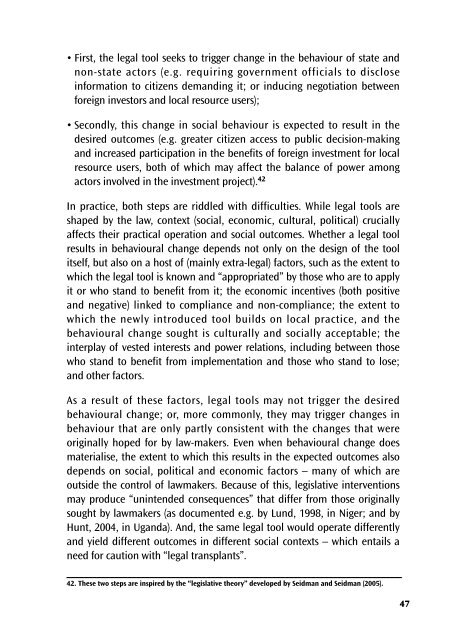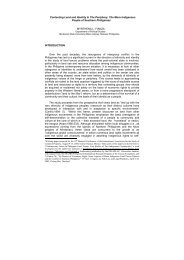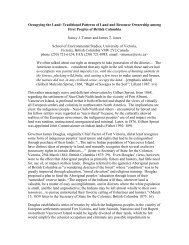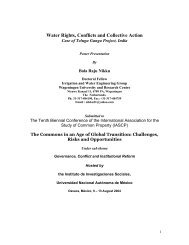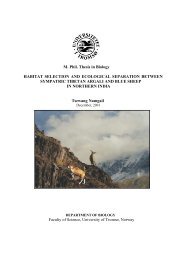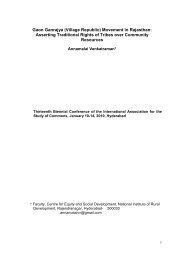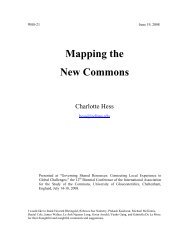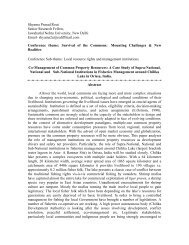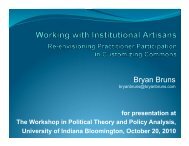Legal empowerment for local resource control
Legal empowerment for local resource control
Legal empowerment for local resource control
Create successful ePaper yourself
Turn your PDF publications into a flip-book with our unique Google optimized e-Paper software.
First, the legal tool seeks to trigger change in the behaviour of state and<br />
non-state actors (e.g. requiring government officials to disclose<br />
in<strong>for</strong>mation to citizens demanding it; or inducing negotiation between<br />
<strong>for</strong>eign investors and <strong>local</strong> <strong>resource</strong> users);<br />
Secondly, this change in social behaviour is expected to result in the<br />
desired outcomes (e.g. greater citizen access to public decision-making<br />
and increased participation in the benefits of <strong>for</strong>eign investment <strong>for</strong> <strong>local</strong><br />
<strong>resource</strong> users, both of which may affect the balance of power among<br />
actors involved in the investment project). 42<br />
In practice, both steps are riddled with difficulties. While legal tools are<br />
shaped by the law, context (social, economic, cultural, political) crucially<br />
affects their practical operation and social outcomes. Whether a legal tool<br />
results in behavioural change depends not only on the design of the tool<br />
itself, but also on a host of (mainly extra-legal) factors, such as the extent to<br />
which the legal tool is known and “appropriated” by those who are to apply<br />
it or who stand to benefit from it; the economic incentives (both positive<br />
and negative) linked to compliance and non-compliance; the extent to<br />
which the newly introduced tool builds on <strong>local</strong> practice, and the<br />
behavioural change sought is culturally and socially acceptable; the<br />
interplay of vested interests and power relations, including between those<br />
who stand to benefit from implementation and those who stand to lose;<br />
and other factors.<br />
As a result of these factors, legal tools may not trigger the desired<br />
behavioural change; or, more commonly, they may trigger changes in<br />
behaviour that are only partly consistent with the changes that were<br />
originally hoped <strong>for</strong> by law-makers. Even when behavioural change does<br />
materialise, the extent to which this results in the expected outcomes also<br />
depends on social, political and economic factors – many of which are<br />
outside the <strong>control</strong> of lawmakers. Because of this, legislative interventions<br />
may produce “unintended consequences” that differ from those originally<br />
sought by lawmakers (as documented e.g. by Lund, 1998, in Niger; and by<br />
Hunt, 2004, in Uganda). And, the same legal tool would operate differently<br />
and yield different outcomes in different social contexts – which entails a<br />
need <strong>for</strong> caution with “legal transplants”.<br />
42. These two steps are inspired by the “legislative theory” developed by Seidman and Seidman (2005).<br />
47


